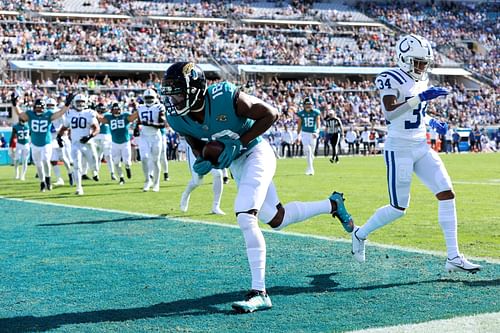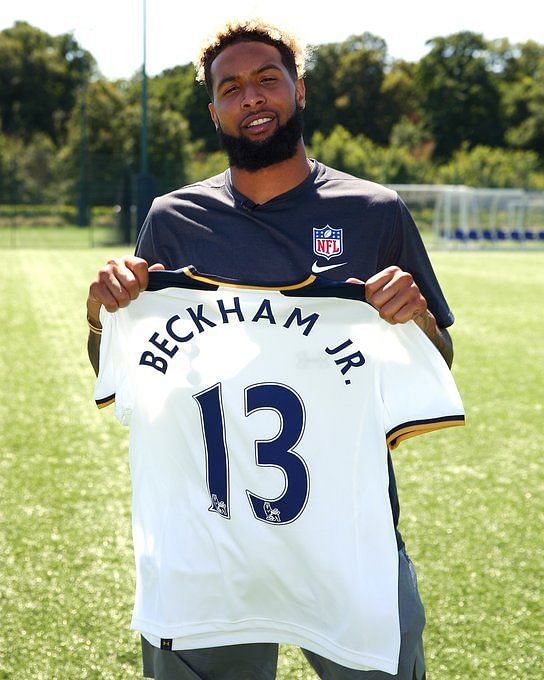
American football's European touchdown: Expansion of the NFL International Series

The National Football League (NFL), or American football for those outside the U.S., would seem like a sport with a rather unremarkable international presence.
The TV viewership figures for Super Bowl 2021 align with this sentiment. While the FIFA World Cup final in 2018 was watched by a whopping 517m people, only 140m (estimated) viewers tuned in to watch the 56th Super Bowl, with 90m of them residing in the U.S.
Why then is the league still looking to bring regular-season matches through European borders (and if recent history is an indicator, succeeding in the process as well)?
The short answer to the question could simply be that they desire a larger following in Europe. But behind what seems like wishful seeing is a strategy that has been developed over the decades.
Globalization of the NFL: The background
The first attempt at a league that looked beyond the U.S. in terms of participation took shape in 1989 with the formation of the World League of American Football (WLAF). The first championship was held in 1991, comprising of six teams from the U.S., three from Europe and one from Canada.
The initiative fizzled away rather unremarkably in 1993 due to financial constraints, among other issues, and was relaunched as NFL Europe, which held fort till 2007 as the primary series' international counterpart.
However, the decreasing number of spectators in European stadiums forced a rethink. NFL Europe made way for the International Series, and for the first time in 2007, a regular-season game was held in Europe when the Miami Dolphins and New York Giants took to the pitch at Wembley Stadium.
Since then, regular season games have been held every year at Wembley and occasionally at Twickenham Stadium. In 2015, an agreement was reached to add the Tottenham Stadium as an additional venue for hosting games in the U.K. from 2019.
What now? NFL is Germany bound
October 2021 saw the Tottenham Hotspur Stadium host two regular-season matches as the Atlanta Falcons and Jacksonville Jaguars played hosts to the New York Jets and Miami Dolphins respectively. The roadmap has been laid for three games in the U.K. in 2022 and a further expansion to Germany.
It was announced in February 2022 that the Allianz Arena (Munich) would host a regular-season match in 2022 (with the Tampa Bay Buccaneers as the designated home team) and Frankfurt would become the second German host city in 2023.
It is no surprise then that Germany has been targeted as the next big market after the U.K. – an estimated 19 million sports fans in Germany follow the sport and 2.23m people watched the Super Bowl in 2021.
The NFL is expected to add more countries to its list of international hosts through its International Home Marketing Areas initiative, through which 18 teams have been granted the right to market their team across eight countries, including designated home games in these countries. In addition to the U.K., Mexico and Germany, also included in this list are Australia, Brazil, Canada, China and Spain.
Road ahead for NFL in Europe
The foray into the U.K. was, to a large extent, a step towards achieving a greater objective – having a franchise in London. While merit behind this idea is yet to be ascertained, it is undeniable that there is an opportunity to make a larger impact in Europe than just hosting matches.
The International Player Pathway (IPP) was started in 2017 to give athletes across the world a shot at becoming an American Football player. The “pathway” starts with selection into the “NFL Combine,” followed by a training camp and a pro-day competition against scouted stateside athletes.
Jordan Mailata, a former Australian Rugby player, was signed by the Philadelphia Eagles after coming through the IPP. An NFL Academy was also set-up in London in 2019 to provide a training and life-skills program, keeping education as the primary focus.
In addition to growing interest in terms of viewership and potential scouting as a player, fans in Europe have also responded well to initiatives such as the NFL Foundation U.K., which works to tackle inequality and lack of opportunities for London's youth between the ages of 12-20 and the NFL Flag program, which has engaged over 50,000 primary school children between the ages of 8-11.
In the U.K. as well as most countries across Europe, sport is part of the social fabric, and the league is on the right track by acknowledging and acting on it.
The expansion strategy targeting both ends of the pyramid may eventually help them achieve their long-term objective of having franchises in major European cities. If successful, it will have a major snowball effect, not only in terms of viewership but also when it comes to the development of sports as a backyard staple across European homes.
The possibilities of developing new initiatives and expanding to new geographies are endless for the highest grossing sports league in the world.



